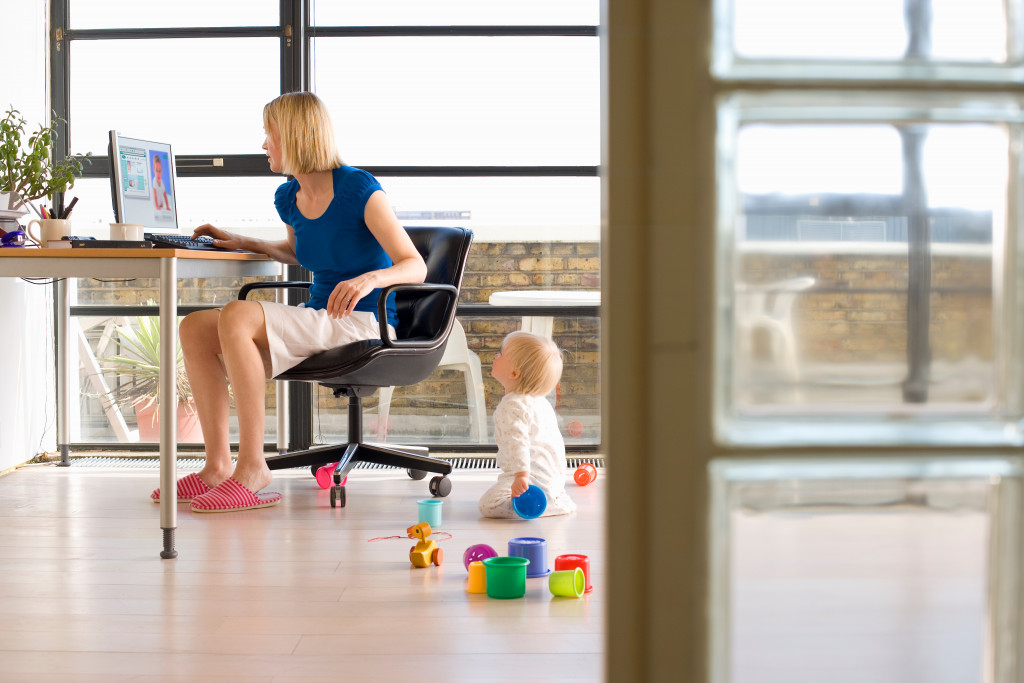- Identifying potential hazards in the home is the first step in babyproofing
- Make sure all doors and windows are kept locked and secure
- Keep small objects out of reach to prevent them from being ingested.
- Secure all furniture and appliances so that they won’t tip over and can’t be accessed by a curious baby.
- Install safety locks and gates in areas where your baby may explore.
As a parent, creating a safe and secure environment for your baby is important. This means taking the necessary steps to ensure your home is free from potential hazards. Babyproofing your home can be an overwhelming task, but with the correct checklist, you can accomplish the job easily. Let’s take a look at what you need to do to get started.
Identify Potential Hazards
The first step of babyproofing your home is identifying potential hazards that could pose a risk to your little one. Start by crawling around on the floor and looking at things from your baby’s perspective—what looks dangerous?
Once you have identified these areas of concern, you can take appropriate measures to prevent any accidents from occurring as your child learns how to crawl and explore their surroundings.
Flooring
When babyproofing your home, it is essential to look at the floor. It can be a potential danger for babies because they are learning to crawl and explore. Look around on the floor from their perspective and see what might hurt them or cause an accident. This also includes how hard the floor is, as babies may slip and fall if the floor is too slippery. If your house has hardwood floorboards, make sure you have non-slip rugs or mats to ensure that your baby has a safe surface to move around.
Outlets
Outlets can be a major hazard for babies, as they are curious and try to stick their fingers into them. They contain high-voltage electrical current, which can cause shock, injury, or even death. It is important to babyproof the outlets in your home by installing outlet covers or plugs so your baby cannot access them. If you have older electrical outlets, consider replacing them with child-proof receptacles.
Doors and Windows
Babies are naturally curious, and exploring their surroundings is a large part of the learning process. It can be dangerous for babies to be able to open doors and windows as they may wander outside or get stuck in places that are not safe for them. Ensure all doors and windows are locked or secured so your baby cannot open them. Windows also pose a potential risk of falling if they are opened too far. Make sure to install window guards or restrictors where necessary to prevent accidents.
Small Objects
Babies are naturally attracted to small objects and may try to put them in their mouths. Make sure that any small objects that could be hazardous for babies, like coins or jewelry, are kept out of reach. If there is anything on the floor that your baby may get ahold of, make sure to pick it up!

Secure All Furniture & Appliances
One of the most critical aspects of babyproofing is securing all furniture and appliances in place. Make sure that all bookcases and dressers are securely fastened, so they won’t tip over if your baby decides to climb on them or pull on them for support. You should also ensure that oven doors are locked shut and stove knobs are out of reach so there is no danger of burns if curious little hands decide to explore these kitchen appliances.
- Kitchen: Make sure all sharp objects, such as knives and scissors, are kept out of reach. Also, keep any potentially hazardous items, such as cleaning products or appliances with hot surfaces (like coffee makers), secured where your baby won’t be able to access them.
- Bathroom: The bathroom is another home area that requires careful consideration. Ensure that no items are within reach of your baby, such as razors or medicines. Also, make sure that the bathtub and shower are free from any potential slipping hazards.
- Bedroom: Ensure that no heavy objects could fall on your baby. Keep any pillows and blankets off of the crib to prevent suffocation.

Install Safety Locks & Gates
Installing safety locks and gates is an essential part of babyproofing your home. Not only do they provide a physical barrier between your child and potential hazards, but they also help to reinforce boundaries in the home while teaching your children about safe behavior. With the proper safety measures, you can help keep your little ones safe as they explore their surroundings.
Safety Locks
Safety locks can be used on doors, cabinets, drawers, windows, or any other area where you want to limit access. It’s best practice to install safety locks on cabinets and drawers, and gates around stairways so your little one won’t be able to put themselves in danger while exploring their new environment.
Common areas where you can install safety locks include:
- Kitchen cabinets
- Toilet seats
- Refrigerators
- Trash cans
- Electrical outlets
Safety Gates & Guards
Gates are beneficial for preventing young children from accessing stairs or other potentially dangerous areas of the house, such as kitchens or other rooms where potential hazards may exist. Look for a gate that is easy to install, secure, and provides adjustable settings so it can fit your space. To prevent falls, you should also install window guards and railings on balconies or decks.
With the right checklist in hand, you can easily create a safe space for your little one to explore without putting themselves at risk for injury. By identifying potential hazards, securing furniture & appliances in place, and installing safety locks & gates where needed, you will be well on your way toward creating a secure environment for your child!

